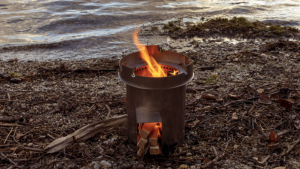If you live in a city, or even on its peripheries like most people do, your world is made up of concrete, glass, steel and wood. Making these materials is a massive energy undertaking, and we just don’t have very much of these resources anymore.
Not only are we using up naturally occurring resources to make building materials, but we’re also making the environment sick in the process. We have no choice but to find some innovative solutions. North Carolina-based company bioMason is trying to do it using biotechnology, and they might upend the cement manufacturing game in the processes.
Founded in 2012 by Ginger Krieg Dosier and her husband Michael, bioMason grows bricks and masonry without using any heat.
Traditional brick-making operations blast clay with high heat for several days, releasing harmful chemicals like carbon dioxide into the atmosphere. In Dosier's process, however, sand is injected with microorganisms to kick start the process.
It starts by packing sand into regular molds, which are then inoculated with bacteria. The bacteria wrap themselves around grains of sand. Each grain acts as a nucleus and calcium carbonate crystals form around it.
The bricks are then fed nutrient-rich water via an irrigation system for the next couple of days, speeding up the growth of the crystals which then fill the gaps between grains of sand. After four days, the bricks are strong, durable and ready to be used on the construction yard, and the water is then reused for the next set.
It’s an innovative process that Dossier, an architecture graduate herself, leaned on multiple technologists, biologists, architects and engineers to perfect. But it isn’t completely new. Her method mimics a naturally occurring material called biological cement, much like the process that occurs when coral is formed.
This type of biomimicry is often seen in the design world where the solutions to some of our most pressing problems have been around us all along.
In Bangladesh, the Dhaka-based Housing and Building Research Institute has started trimming their own cement production by producing a brick made of a compressed composite of river mud and cement. The bricks do not require firing in a kiln, but simply harden in the sun.
The river brick is one of many sustainable solutions under development by the Ministry of Housing and Public Works.
Although the bricks are not available commercially yet, the institute has constructed a five-storey demonstration building with them. A one-storey school was also built using the bricks in 2016, which proved to be 30 per cent cheaper to build than a conventional building.
According to Reuters, traditional brick-making kilns around Dhaka are responsible for a big share of the densely populated capital’s air pollution. So the ministry has made a massive investment to find alternative building solutions that are better for the environment and their budget.
For Dossier, the challenge will be to convince people to use an alternative product, breaking the brick and mortar tradition that’s existed for centuries.
Read more:
The world is changing and green material is at the forefront








